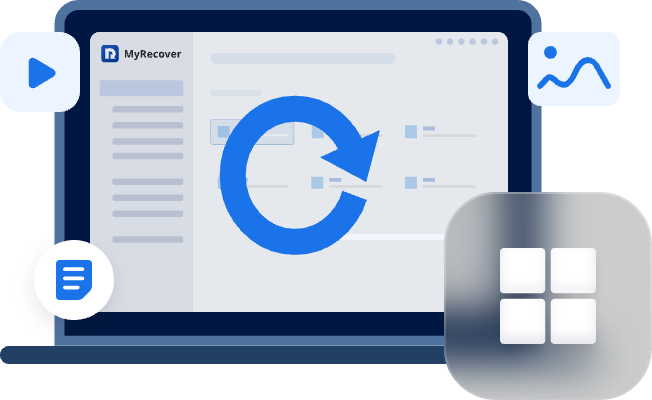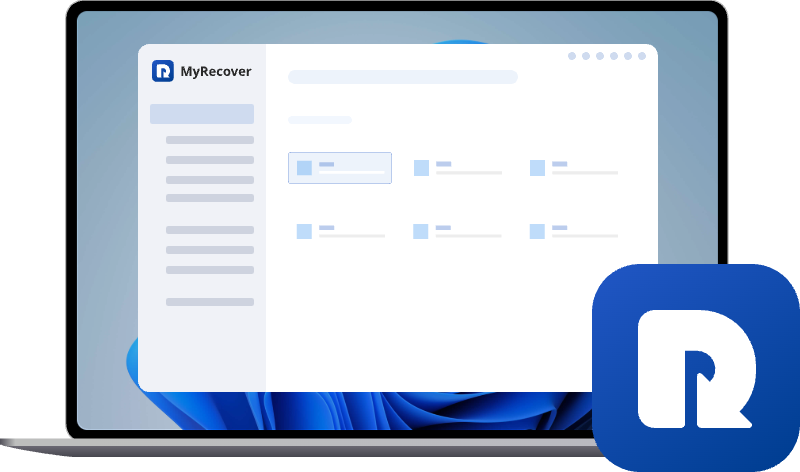How to Recover Data From Unallocated Partition in Windows PC?
If your hard drive or SSD suddenly appears as "unallocated" in Disk Management, here you can learn why the partition becomes unallocated space, as well as how to recover data from an unallocated partition or hard drive quickly and efficiently.
Overview of Unallocated Space and How it Comes Out?
Unallocated space refers to a section of a hard drive, SSD, or external storage device that is not assigned to any partition or file system. As a result, the operating system cannot store or access data in this space until it is properly formatted and allocated to a drive letter (e.g., C:, D:). If your hard drive becomes unallocated, you will lose access to any data stored within it.So, how to recover data from unallocated partition confuses a lot of users, and that's exactly what we'll discuss today.
Unallocated space can appear for various reasons beyond a new or uninitialized drive, including:
- Accidental Partition Deletion: If a partition is deleted (intentionally or mistakenly), its space becomes unallocatedin Windows Disk Management, and you cannot see it in your Windows File Explorer.
- Drive Corruption: File system errors, sudden power loss, or malware can corrupt a partition, making it appear as unallocated.
- Failed OS Installation or Disk Management Errors: Interruptions during Windows installation or incorrect partitioning can leave space unallocated.
- Improper Resizing or Merging Partitions: Errors while extending or shrinking partitions in Disk Management can lead to a piece of unallocated space.
- Hardware or Firmware Issues: A failing hard drive or SSD may lose partition tables, causing unallocated space errors.
Can Data Be Recovered From Unallocated Space?
Yes, data can often be recovered from unallocated space using specialized data recovery software or professional services. Since unallocated space means the data is no longer linked to a partition, but not necessarily erased, recovery is possible unless the space has been overwritten.
How to Recover Data from Unallocated Space? (Scenario-Based Solutions)
Since unallocated space can result from different causes(as we list in the first section), the recovery approach varies. Below are the best methods based on each scenario:
1. Professional Data Recovery Software (Accidental Partition Deletion)
When a partition is accidentally deleted—whether through Disk Management, third-party tools, or a mistaken command—the storage space previously occupied by that partition will appear as "unallocated" in Windows Disk Management. While the partition itself disappears from File Explorer, the original data often remains intact on the drive until new data overwrites it.
In this situation, you need to turn to professional data recovery, which can scan your entire computer for deleted partition, list recoverable files and then recover them. MyRecover is such an excellent partition data recoveryapplication. Its basic free edition can help recover up to 500MB data. If you want to recover more, try its Professional edition instead, unlimited data recovery quota plus more advanced features, including previewing files before final recovery, system crash recovery, etc.

- Wide Compatibility: Supports data recovery from HDDs, SSDs, USB drives, SD cards, cameras, and more.
- Comprehensive Format Support: Recovers 200+ file types, including images, videos, audio, documents, and archives.
- Multiple Recovery Scenarios: Ideal for accidental deletion, formatted drives, emptied Recycle Bin, system crashes, and more.
- File System Support: Compatible with NTFS, FAT32, exFAT, and ReFS on Windows 11/10/8/7 and Windows Server.
- Efficient & Reliable: Provides a stable and secure recovery solution to maximize file retrieval.
To recover data from unallocated space, just do as following:
Step 1. Download and install MyRecover software.
Step 2. Launch it, click "Partition Lost Recovery" under the "Advanced Recovery" section, which will scan your computer for all lost or deleted partitions.
Step 3. Once the partition is found, click "Scan" to search for all recoverable files in the unallocated space.
Step 4. After the scanning process completes, you can choose the necessary files or folders, and click “Recover”.
Step 5. Select a safe location to save the recovered files from the unallocated hard drive.
2. Run CHKDSK (Drive Corruption)
When a hard drive or SSD becomes corrupted due to file system errors, sudden power loss, or malware attacks, it may appear as "RAW" or "unallocated" in Disk Management. You might also encounter error messages like "You need to format the disk before you can use it" when trying to access the drive.
This typically means the file system structure is damaged, but the actual data may still be recoverable if the drive hasn’t suffered physical failure.Under this situation, you can run CHKDSK tool, which can repair possible file system error and recover readable data.
Step 1. Search Command Prompt in the Windows Start menu. Right click the matching result and select "Run as Administrator".
Step 2. In the Command Prompt window, type the following command and press on Enter.
chkdsk g: /f /r (Replace gwith the affected drive letter.)
In the command, the “/f” parameter will fix errorswhile the “/r” will locate bad sectors and recover readable data.
3. System Restore (Failed OS Installation)
If a Windows installation fails or Disk Management operations encounter errors, your drive may show unallocated space where partitions previously existed. In such cases, you can attempt to recover your datafrom unallocated space using System Restore, which can help revert your system to a previous working state.
If you can boot into Windows, navigate to Control Panel > System and Security > System > System Restore.
If you can't boot into Windows, access the Windows Recovery Environment (Windows RE). Force restart your PC 2-3 times during boot to trigger Automatic Repair. And select Troubleshoot > Advanced options > System Restore.
In the System Restore window, you'll see a list of available restore points (dates and times). Choose one from before the failed OS installation or disk operation. Let System Restore complete.
-
this method primarily addresses system files rather than recovering personal data from unallocated space.If you are recovering files from other data partitions (rather than the system partition), try MyRecover instead, which allows you to recover all files from computer that cannot boot using a bootable meida.
4. Data Recovery Software (Improper Partitioning)
When partition resizing or merging operations go wrong and result in unallocated space, your data may still be recoverable if you act quickly.If you do this via third-party partition manager, you can check the manager an see if you can undo the change. If not, use MyRecover to get back data from the unallocated drive.
Sum up
The above covers almost all causes of unallocated space, and methods of how to recover data from unallocated space accordingly. If you don’t want to spend precious time to test every method, then MyRecover is a top choice since it can recover lost data from all situations, including partition deletion, partition format, file system corruption, emptied Recycle Bin, virus attack, power failure during data reading / writing, system crash and so on.
If your partition is now a piece of unallocated space due to hardware or firmware issues, please consult to professional service to recover data from unallocated hard drive.


